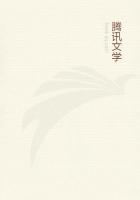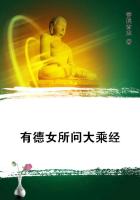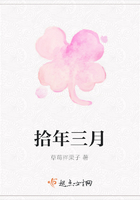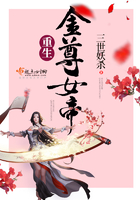Think of this the next time you go through Scotland in the railway, especially when you get near Edinburgh. As you run through the Lothians, with their noble crops of corn, and roots, and grasses--and their great homesteads, each with its engine chimney, which makes steam do the work of men--you will see rising out of the plain, hills of dark rock, sometimes in single knobs, like Berwick Law or Stirling Crag--sometimes in noble ranges, like Arthur's Seat, or the Sidlaws, or the Ochils. Think what these black bare lumps of whinstone are, and what they do. Remember they are mines--not gold mines, but something richer still--food mines, which Madam How thrust into the inside of the earth, ages and ages since, as molten lava rock, and then cooled them and lifted them up, and pared them away with her ice-plough and her rain-spade, and spread the stuff of them over the wide carses round, to make in that bleak northern climate, which once carried nothing but fir-trees and heather, a soil fit to feed a great people; to cultivate in them industry, and science, and valiant self-dependence and self-help; and to gather round the Heart of Midlothian and the Castle Rock of Edinburgh the stoutest and the ablest little nation which Lady Why has made since she made the Greeks who fought at Salamis.
Of those Greeks you have read, or ought to read, in Mr. Cox's Tales of the Persian War. Some day you will read of them in their own books, written in their grand old tongue. Remember that Lady Why made them, as she has made the Scotch, by first preparing a country for them, which would call out all their courage and their skill; and then by giving them the courage and the skill to make use of the land where she had put them.
And now think what a wonderful fairy tale you might write for yourself--and every word of it true--of the adventures of one atom of Potash or some other Salt, no bigger than a needle's point, in such a lava stream as I have been telling of. How it has run round and round, and will run round age after age, in an endless chain of change. How it began by being molten fire underground, how then it became part of a hard cold rock, lifted up into a cliff, beaten upon by rain and storm, and washed down into the soil of the plain, till, perhaps, the little atom of mineral met with the rootlet of some great tree, and was taken up into its sap in spring, through tiny veins, and hardened the next year into a piece of solid wood. And then how that tree was cut down, and its logs, it may be, burnt upon the hearth, till the little atom of mineral lay among the wood-ashes, and was shovelled out and thrown upon the field and washed into the soil again, and taken up by the roots of a clover plant, and became an atom of vegetable matter once more. And then how, perhaps, a rabbit came by, and ate the clover, and the grain of mineral became part of the rabbit; and then how a hawk killed that rabbit, and ate it, and so the grain became part of the hawk; and how the farmer shot the hawk, and it fell perchance into a stream, and was carried down into the sea; and when its body decayed, the little grain sank through the water, and was mingled with the mud at the bottom of the sea. But do its wanderings stop there? Not so, my child. Nothing upon this earth, as I told you once before, continues in one stay.
That grain of mineral might stay at the bottom of the sea a thousand or ten thousand years, and yet the time would come when Madam How would set to work on it again. Slowly, perhaps, she would sink that mud so deep, and cover it up with so many fresh beds of mud, or sand, or lime, that under the heavy weight, and perhaps, too, under the heat of the inside of the earth, that Mud would slowly change to hard Slate Rock; and ages after, it may be, Madam How might melt that Slate Rock once more, and blast it out; and then through the mouth of a volcano the little grain of mineral might rise into the open air again to make fresh soil, as it had done thousands of years before. For Madam How can manufacture many different things out of the same materials. She may have so wrought with that grain of mineral, that she may have formed it into part of a precious stone, and men may dig it out of the rock, or pick it up in the river-bed, and polish it, and set it, and wear it. Think of that--that in the jewels which your mother or your sisters wear, or in your father's signet ring, there may be atoms which were part of a live plant, or a live animal, millions of years ago, and may be parts of a live plant or a live animal millions of years hence.
Think over again, and learn by heart, the links of this endless chain of change: Fire turned into Stone--Stone into Soil--Soil into Plant--Plant into Animal--Animal into Soil--Soil into Stone--
Stone into Fire again--and then Fire into Stone again, and the old thing run round once more.
So it is, and so it must be. For all things which are born in Time must change in Time, and die in Time, till that Last Day of this our little earth, in which, "Like to the baseless fabric of a vision, The cloud-capped towers, the gorgeous palaces, The solemn temples, the great globe itself, Yea, all things which inherit, shall dissolve, And, like an unsubstantial pageant faded, Leave not a rack behind."
So all things change and die, and so your body too must change and die--but not yourself. Madam How made your body; and she must unmake it again, as she unmakes all her works in Time and Space; but you, child, your Soul, and Life, and Self, she did not make; and over you she has no power. For you were not, like your body, created in Time and Space; and you will endure though Time and Space should be no more: because you are the child of the Living God, who gives to each thing its own body, and can give you another body, even as seems good to Him.


